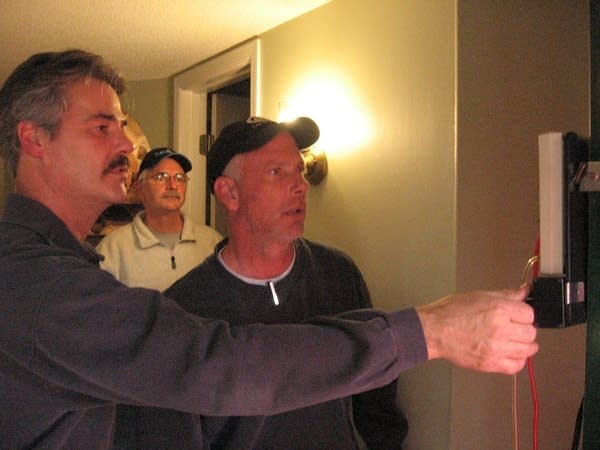Stimulus weatherization money has contractors gearing up
Go Deeper.
Create an account or log in to save stories.
Like this?
Thanks for liking this story! We have added it to a list of your favorite stories.

The low-income weatherization program has been around for decades. It dates back to the energy crisis of the 1970s, and now it's getting ramped up in a big way.
"Now you're looking at an increase of 10 times or even 13 times the normal year," said Bill Walsh of the Minnesota Department of Commerce.
Walsh said the state usually has about $10 million to spend on low income weatherization. The stimulus package pumps that number up to $138 million.

The increased funds will allow local organizations to do energy audits, swap out the furnace, add insulation or other improvements in three times as many homes as usual, or 17,000 homes.
Turn Up Your Support
MPR News helps you turn down the noise and build shared understanding. Turn up your support for this public resource and keep trusted journalism accessible to all.
All this work takes skilled labor. And Walsh said local agencies are rushing to find more of it. They're lining up 200 new energy auditors statewide and bringing in dozens of new contractors.
"The word is it's all weatherization all the time now for them," Walsh said.
Earlier this week, workers at a home in Andover were getting trained in on weatherization projects through the Anoka County Community Action Program (CAP). On their second day in the home they're using a fan mounted in an exterior doorway to suck air out of the home, lowering the air pressure inside.
This helps locate leaks that let in cold air, which drive a home's heating costs up.

The day before, the workers found a major leak and fixed it.
"Quite a difference. We really knocked that down," said the lead auditor, Brian Faust.
The home belongs to one of the contractors who does weatherization jobs for the Anoka CAP agency-- Ron Picotte. He volunteered to have his place weatherized to give new auditors the practice.
Right now his main business-- construction-- has dropped off. Picotte just had to lay off a couple workers on Monday. But now with the stimulus package creating more weatherization projects, he plans to bring them back in a few weeks for jobs, such as insulating, and hire additional workers, as well.
"This is one of the only positive things that are showing up right now. There's just not that much out there happening yet," Picotte said. "The medical industry seems to be the only healthy industry out there right now. Everything else is so slow. You can't bank on it. You can't count on it."
Gregg Sneethen's heating and air conditioning business also shrank along with new home construction. Now he's getting trained in as an energy auditor for Anoka CAP agency.
He took a class at Dunwoody College in Minneapolis, which has been the state's leading training program. School officials say classes there have been filling up and the college keeps adding more to keep up with demand.
Sneethen said he's thrilled by the prospect of weatherizing work. And he seems to embrace the principles.
"We're very concerned with high efficiency furnaces, air conditioning. But a lot of the stuff, too, that we want to do is figure out ways of cutting expenses, making everything more green -- less carbon footprint," Sneethen said.
But as he says this, his partner Jeff Arent turns bright red and shakes with laughter and says he doesn't think of himself as "green." Arent's more impressed with the "green" that homeowner Ron Picotte will save through weatherization.
"Ron here will probably save 300-400 this season on gas," Arent said.
The state is looking for some cost savings, too. The Department of Commerce said weatherization cuts home energy usage by about 32 percent. And every dime saved that way means less taxpayer money spent on home heating assistance.



